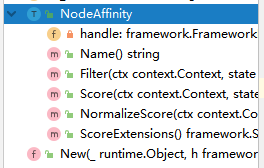当前位置:网站首页>[Server data recovery] Data recovery case of file system data loss caused by SAN LUN mapping error
[Server data recovery] Data recovery case of file system data loss caused by SAN LUN mapping error
2022-08-09 18:04:00 【51CTO】
Server Data Recovery Environment:
SUN Fiber Storage System;
The server runs SUN SOLARIS operating system.
![[Server data recovery] SAN LUN mapping error caused the fileSystem data loss data recovery case_Server data recovery](/img/fa/a6d9fdc17dd92f68f876df4a6e3ca6.jpg)
Server Failure & Analysis:
Due to the needs of business expansion, the user added an IBM server for new applications, and mapped a LUN in the storage to the newly added application when the fiber storage was online.on the IBM server.Unexpectedly, the mapped volume was originally mapped to a LUN on the SOLARIS production system. The IBM server partially initialized the LUN. After that, the disk on SOLARIS reported an error. After restarting, it was found that the volume could not be mounted.After the user contacts the SUN engineer for testing, the fsck operation is performed. After the operation is completed, the file system can be mounted, but many data are lost or the size becomes 0, especially the latest data is seriously damaged.So users contact our data recovery center for data recovery.
Such faults are common in SAN environments, and most of them are caused by human beings, as is the case in this case.Under normal circumstances, LUNs allocated by SAN are in exclusive mode. If they are controlled by several operating systems at the same time, it is easy to cause non-exclusive write operations and file system consistency errors.
If you want to restore this part of the data, you need to go deep into the file system to check the damage of each structure.In this case, the file system uses UFS, so for any file that needs to be restored, priority is given to whether the directory information, node, and data area are normal. If the above three structures are normal, the data can be completely restored.However, in most cases, INODE will be cleared after fsck, and even if the directory information is left, it cannot correspond to the data one by one. In this case, you can only refer to the internal format of the file for type-based data recovery.
Server data recovery process:
1. The server data recovery engineer makes a complete backup of the failed volume. Since the RAID is fault-free, the original LUN can be backed up directly in the SOLARIS environment.
2. Analyze the file system in the backup, and determine that the inodes of the files to be restored have been cleared and cannot be restored, so they have to be processed according to the file type.
3. After analyzing the specific files that the user needs to restore, it is found that the index files using the vfs document system have strong type characteristics, and the files contain directory information.
4. According to the index structure characteristics of the official document system, the Beiya server data recovery engineer writes a program to extract the data, and then renames the data according to the characteristics.
5. Restore the data files by type, and then the user will rearrange the data files according to the index file.
6. After 24 hours, 99% of the catalog index files were successfully restored, most of the data files were restored successfully, and the rest of the damaged and unrecoverable files were re-reported to other departments by the user according to the catalog index file.collection.The user accepts the data recovery result.
边栏推荐
猜你喜欢
随机推荐
Chapter 3: Use of GEE Data (3.1-3.3)
C语言小游戏—扫雷
网络——IPV4地址(一)
PHP 补全日期区间中缺少的日期/返回缺少的日期
【挨踢(IT)初体验】
无需支付688苹果开发者账号,xcode13打包导出ipa,提供他人进行内测
2022年深圳杯数学建模A题代码思路-- 破除“尖叫效应”与“回声室效应”,走出“信息茧房”
网络——介质访问控制
C语言初印象(1.2w字粗略讲讲C)
认识盒子模型
动态内存管理,触及本质的最详解析
学编程的第十天
计组——大端方式和小端方式相关题目
初始C语言 C生万物
二.sizeof和strlen的区别
C语言分支语句if,switch语句详细讲解
【Web渗透】信息收集篇——Google搜索引擎(二)
2022钉钉杯A题思路及代码:银行卡电信诈骗危险预测
3. Using Earth Engine Data
第二章:创建交互式地图(2.1-2.3)









